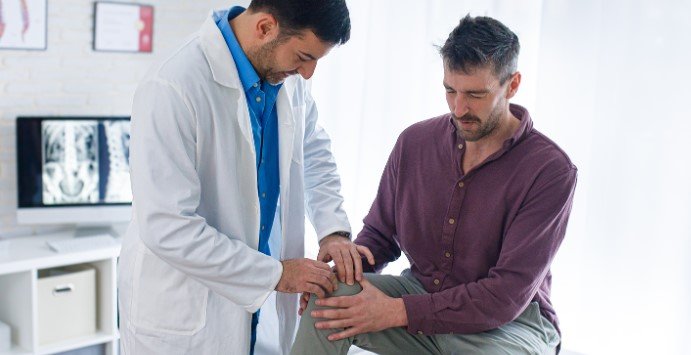The phrase “bone spur” alone sounds uncomfortable, yet these growths are often silent intruders. Many people don’t realize they have them until they show up on an X-ray, notes Derek Semaan, M.D., orthopedic surgeon at Henry Ford Health.
“Bone spurs are essentially extra bits of bone that develop,” Dr. Semaan explains. “They act almost like the body’s protective shield—growing in areas under stress to help limit motion where strain is high.”
When spurs appear near surface-level joints—like in the hands or feet—they may be felt as small, rounded bumps pushing beneath the skin. Medically known as osteophytes, these growths usually stem from ongoing stressors, such as:
- Osteoarthritis. The leading cause of bone spurs, this degenerative joint condition erodes cartilage—the soft padding that prevents bone-on-bone contact. With cushioning gone, friction between bones sparks pain, swelling, stiffness, and sometimes the growth of spurs that further limit movement.
- Injury. After trauma, as the bone heals, it may form a spur in the process—much like scar tissue forming on skin.
- Tendonitis. Repetitive strain in the foot or shoulder can inflame tendons, producing pain and swelling. Over time, especially without supportive footwear or with frequent overuse, spurs may develop in response.
While many remain painless, trouble arises when a spur presses against nerves, ligaments, or tendons—leading to stiffness, discomfort, swelling, or tingling. In rare cases where spurs cause isolated pain without another condition driving it, they can be surgically removed. More often, however, Dr. Semaan emphasizes that the real culprit is osteoarthritis, with spurs being just part of the larger picture.
Treatment Options for Bone Spurs
“Managing bone spurs typically goes hand in hand with treating osteoarthritis,” says Dr. Semaan. First-line care usually involves non-surgical methods:
- Over-the-counter anti-inflammatory medications to calm swelling
- Cortisone or gel injections to target inflammation or lubricate joints
- Physical therapy to build muscle strength and reduce pressure on affected joints
If these conservative approaches fail, joint replacement surgery may be considered. During this procedure, bone spurs are removed, and the worn joint is replaced—often tackling both issues at once.
Can Bone Spurs Be Prevented?
There’s no guaranteed way to prevent them—much like you can’t entirely stop the natural wear of aging joints. Still, you can slow joint degeneration with smart habits:
- Commit to daily stretching and strength training
- Choose low-impact activities such as swimming or cycling
- Wear supportive footwear to protect foot and ankle joints
- Maintain a healthy weight, as excess body mass adds pressure to weight-bearing joints
In essence, while bone spurs themselves may be unavoidable, supporting joint health can help you manage or delay the problems that allow them to develop.
